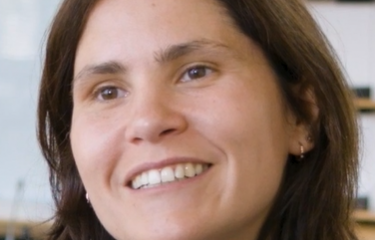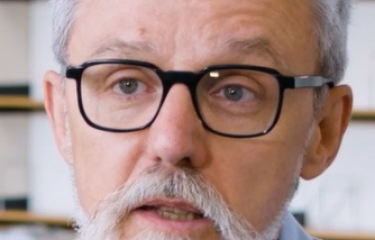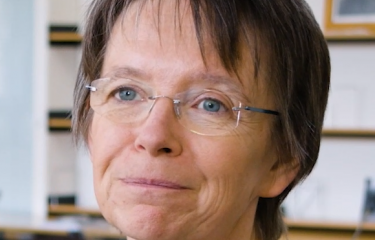Understanding the replication mechanisms of HIV in the body is vital for the development of more targeted treatments. Research into macrophages is particularly crucial, since these immune cells are the first line of cellular defense against infectious agents, and HIV accumulates silently in them, making them a reservoir for the virus – even in people receiving treatment. Scientists from the Institut Pasteur and the CNRS have shown that one of the stages in HIV replication may actually occur in the nucleus of macrophages. This finding challenges existing scientific knowledge and paves the way for new therapeutic targets.
HIV, the virus that causes AIDS, was discovered by Institut Pasteur scientists in 1983 (Françoise Barré-Sinoussi and Luc Montagnier received the Nobel Prize in Medicine for the discovery in 2008). HIV/AIDS remains one of the leading causes of death worldwide for adolescents and women of childbearing age. The number of new infections is currently on the rise in Eastern Europe, and in France there are still approximately 6,000 new cases each year. Understanding the mechanisms used by HIV to replicate in the body is vital for the identification of new therapeutic targets.
HIV reverse transcription, a little known mechanism
HIV is a retrovirus. Once it has entered the body, DNA is produced in the host cell from the viral RNA, a phenomenon known as reverse transcription that is one of the particularities of retroviruses. In the case of HIV, it is not yet known where and in what way this reverse transcription takes place. The most common theory has always been that the phenomenon occurs solely in the cell's cytoplasm, and that reverse transcription of total RNA into DNA is needed for it to be imported into the cell. "Reverse transcription has been targeted by several drugs which we previously thought were targeting a clearly demarcated stage in HIV replication which only takes place in the cytoplasm of host cells. Surprisingly, we observed that there was a large amount of genomic RNA in niches in the nucleus of macrophages, so we investigated the role of genomic RNA in the nucleus using molecular virology techniques and recent theories about the nuclear import of HIV," explains Francesca Di Nunzio, group leader in the Molecular Virology and Vaccinology Unit at the Institut Pasteur.
Reverse transcription may occur in the cell nucleus
Francesca Di Nunzio and Christophe Zimmer, Head of the Imaging and Modeling Unit at the Institut Pasteur, studied HIV replication in macrophages, immune cells that serve as the first line of cellular defense against infectious agents and are also part of the HIV reservoir. "The viral DNA is integrated into the cell's DNA," explain the scientists. "Stimulating macrophages reactivates production of the infectious virus. So this reservoir represents an obstacle to effective treatment, and studying macrophages is important in understanding the biology of the HIV virus and developing more targeted treatments."
Their research challenges the theory that reverse transcription only occurs in the cytoplasm of host cells. "Using imaging techniques, we were able to shed new light on the HIV replication cycle in macrophages," explains Christophe Zimmer. "We demonstrated that, in these cells, the genomic RNA of the virus enters the nucleus and accumulates in niches associated with splicing factors, where it can be reverse transcribed into viral DNA."
This finding helps improve our understanding of HIV reverse transcription, which could lead to the development of more effective drugs.
The study was funded by the French Agency for Research on AIDS and Viral Hepatitis (ANRS), the French Foundation for Medical Research (FRM), Sidaction and the Institut Pasteur.
Source:
Clustering and reverse transcription of HIV-genomes in nuclear niches of macrophages, EMBO Journal, 3 december 2020
Elena Rensen1,2, Florian Mueller1, Viviana Scoca2, Jyotsana J Parmar1, Philippe Souque2, Christophe Zimmer1, & Francesca Di Nunzio2
1Imaging and Modeling Unit, Institut Pasteur, UMR3691CNRS, C3BI USR3756IP CNRS, Paris, France
2Molecular Virology and Vaccinology, Institut Pasteur, Paris, France
This study is part of the priority scientific area Emerging infectious diseases of the Institut Pasteur's strategic plan for 2019-2023.






